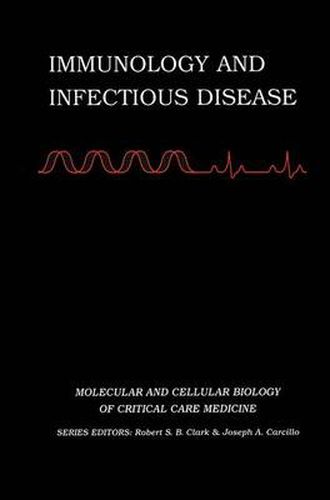Readings Newsletter
Become a Readings Member to make your shopping experience even easier.
Sign in or sign up for free!
You’re not far away from qualifying for FREE standard shipping within Australia
You’ve qualified for FREE standard shipping within Australia
The cart is loading…






This title is printed to order. This book may have been self-published. If so, we cannot guarantee the quality of the content. In the main most books will have gone through the editing process however some may not. We therefore suggest that you be aware of this before ordering this book. If in doubt check either the author or publisher’s details as we are unable to accept any returns unless they are faulty. Please contact us if you have any questions.
Individualized dosing regimens specific to the patient, infection, bacteria, and antibiotic can optimize outcome. Integration of pharmacokinetic and pharmacodynamic data, called dual individualization, can be accomplished through the use of AUIe. AUIC dosing has been shown to predict bacteriological outcomes, hasten clinical outcomes, reduce the emergence of resistance, and be cost-effective. MPC dosing has been shown to predict the emergence of resistant submutants. AUIC and MPC information can provide guidance as to when low doses can be used, and when higher concentrations are required. This strategy can ensure efficacy, minimize toxicity, reduce the opportunity for resistance to occur, and save money. REFERENCES I. Paladino JA. Streamlining antibiotic therapy: clinical application of pharmacokinetic and pharmacodynamic principles. J Osteopath Med 1991; 5: 16-25. 2. Liss RH, Batchelor FR. Economic evaluations of antibiotic use and resistance - a perspective: report of task force 6. Rev Infect Dis 1987; 9 (suppI3): S297-312. 3. Holmberg SO, Solomon SL, Blake PA. Health and economic impacts of antimicrobial resistance. Rev Infect Dis 1987; 9: 1065-78. 4. Sanders cc. Mechanisms responsible for cross-resistance and dichotomous resistance among the quinolones. Clin Infect Dis 2001; 32(Suppl I ):S 1-8. 5. Ballow CH, Schentag 11. Trends in antibiotic utilization and bacterial resistance: report of the NNRSG. Diagn Microbiol Infect Dis. 1992; 15(suppl):37S-42S. 6. Rice LB, Eckstein EC, DeVente J, Shlaes OM. Ceftazidime-resistant Klebsiella pneumoniae isolates recovered at the Cleveland Department of Veterans Affairs Medical Center. Clin Infect Dis 1996; 23: 118-24.
$9.00 standard shipping within Australia
FREE standard shipping within Australia for orders over $100.00
Express & International shipping calculated at checkout
This title is printed to order. This book may have been self-published. If so, we cannot guarantee the quality of the content. In the main most books will have gone through the editing process however some may not. We therefore suggest that you be aware of this before ordering this book. If in doubt check either the author or publisher’s details as we are unable to accept any returns unless they are faulty. Please contact us if you have any questions.
Individualized dosing regimens specific to the patient, infection, bacteria, and antibiotic can optimize outcome. Integration of pharmacokinetic and pharmacodynamic data, called dual individualization, can be accomplished through the use of AUIe. AUIC dosing has been shown to predict bacteriological outcomes, hasten clinical outcomes, reduce the emergence of resistance, and be cost-effective. MPC dosing has been shown to predict the emergence of resistant submutants. AUIC and MPC information can provide guidance as to when low doses can be used, and when higher concentrations are required. This strategy can ensure efficacy, minimize toxicity, reduce the opportunity for resistance to occur, and save money. REFERENCES I. Paladino JA. Streamlining antibiotic therapy: clinical application of pharmacokinetic and pharmacodynamic principles. J Osteopath Med 1991; 5: 16-25. 2. Liss RH, Batchelor FR. Economic evaluations of antibiotic use and resistance - a perspective: report of task force 6. Rev Infect Dis 1987; 9 (suppI3): S297-312. 3. Holmberg SO, Solomon SL, Blake PA. Health and economic impacts of antimicrobial resistance. Rev Infect Dis 1987; 9: 1065-78. 4. Sanders cc. Mechanisms responsible for cross-resistance and dichotomous resistance among the quinolones. Clin Infect Dis 2001; 32(Suppl I ):S 1-8. 5. Ballow CH, Schentag 11. Trends in antibiotic utilization and bacterial resistance: report of the NNRSG. Diagn Microbiol Infect Dis. 1992; 15(suppl):37S-42S. 6. Rice LB, Eckstein EC, DeVente J, Shlaes OM. Ceftazidime-resistant Klebsiella pneumoniae isolates recovered at the Cleveland Department of Veterans Affairs Medical Center. Clin Infect Dis 1996; 23: 118-24.